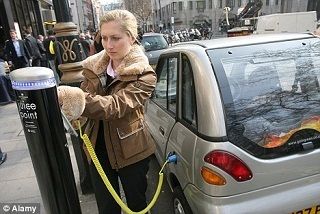Could the United States' Infrastructure Support the Vast Majority of Americans Driving Electric Vehicles?

Arnis Tarassu, Professional Leaf user and mechanical engineering student answers: Yes. Short answer: 96% of all charging is done at home at night. Grid has very low load at night.
I respond:
Mr. Tarassu is correct; there is little danger of neighborhood transformers’ blowing up because of increased load. There are other ways of looking at the problem, however.
Charging EVs, i.e., putting more load on the grid at night (in the U.S. at this point, at least) almost always means burning more coal, and the fact that the toxic characteristics of coal are so much worse than those of burning oil means that EVs have very little environmental benefit right now; some argue that they represent a net negative. Of course, all that changes hugely the moment that coal is no longer the “go-to” source of baseload power.
Another point to be made is that, even though transportation represents almost 40% of our overall energy consumption, we could replace all 230 million cars and trucks on our roads here with a total of less than 14% increase in the load on our electricity grid. This is due to the incredible inefficiency of the internal combustion engine in comparison to the charge/discharge cycle of batteries and electric motors. This represents a huge carrot associated with the migration to electric transportation when we get rid of coal.

I have opined before that charging electric cars is actually happening backwards. Electric cars should be charged at work during the day to help even out the power generated by solar panels and avoid having to burn coal at night. Kinda help to smooth out that “duck curve”.
Brian
Charging electric cars at night is the norm now in the US, but it may not be in 10 to 15 years when the majority of new cars coming onto the road may well be electric. Over that period, the amount of solar power in the US will probably increase into the 150 to 200 GW range or thereabouts, with a similar or larger amount of wind power.
In this situation, “smart charging” will be the obvious way to go – with vehicles effectively becoming stationary energy storage devices for the 22 hours or so that they typically sit still.
With the right software, the majority of charging will take place on an opportunistic basis – when the sun is shining and or the wind is blowing, using electricity that might otherwise be surplus to requirements.
Except in rare circumstances, it is not necessary to plug the vehicle in for an immediate full charge as fast as possible i.e. if you have a 10 mile journey home from work, and already have 100 miles out of 200 miles worth of capacity in the battery, there is no rush to charge up, however if the spot price of electricity drops to a couple of cents per kWh due to sunny and windy conditions, and your car is parked up, why not fill the battery all the way?
There is no doubt that the time of day during which we’re charging our cars will spread out as more EVs come on and more charging stations are built in locations where our cars are parked during the day, e.g., at the workplace.
Yet we need to keep in mind that our entire paradigm for personal transportation may be in the process of changing–from big, heavy and unaffordable metal boxes on wheels that are unused 23 hours/day and grossly underused the remaining hour–to something else. So what is that something else? Right now we have to be betting on rides on command, e.g., Uber and Lyft.
I never owned a rotor-tiller; in fact, it never dawned on me to buy one, but I rented one annually, year after year, as required to prepare my vegetable garden. Now obviously, I need to move my body around more frequently than I need to move those clods of earth around, but I think we’re headed in a similar direction re: transportation.